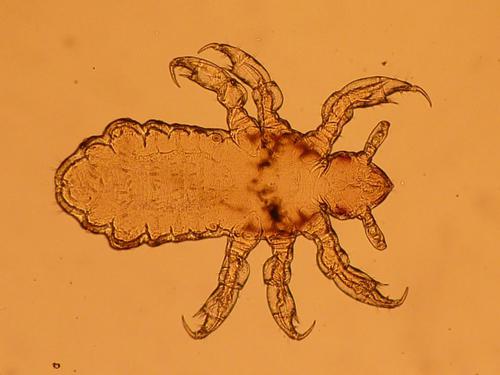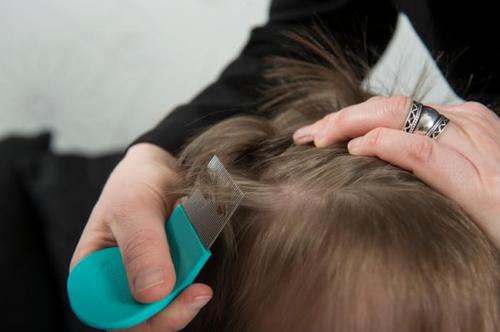Where Do Lice Come From: Best Tips for You
Lice are parasitic insects that depend on human blood from different body parts for survival. There are three different types of lice, named for the parts of the body on which they are found. They are head lice, body lice, and pubic lice.
Lice are spread through body contact or sharing personal belonging like clothes or beddings with an infected person. Their infestation is characterized by symptoms including itching sensation, skin irritation and red colored bumps on the neck, scalp, shoulders and pubic parts.
Understand Where Do Lice Come from
Have you ever wondered where do lice come from? They live on and are hosted by the human body, but few know about where they come from. Below are details on where lice come from.
1. Human Evolution and Lice
As humans evolved, so did lice. It is believed about 100,000 years ago, head lice separated from body lice through a process of evolution. As their host human began wearing clothes, body lice developed claws and used them to cling to cloth fibers. After this development, their target area changed. However, head lice did not change and their modus of operation and survival remained unchanged, i.e., to cling to human hair and suck blood from the scalp.

2. A dirty Environment is Not the Key Factor
People believe there is a connection between lice and dirt. They believe living in a dirty area, having dirty beddings or clothes, and not washing one's body will attract lice infestation. However, for lice to survive, all they need is blood from the host and a conducive temperature for nit hatching. The idea that dirt lice infestation is not correct. A dirty environment contributes nothing to lice spread.
3. How Do Lice Spread?
To answer that, one must understand where do lice come from? Simply put, they are spread from a host person to a non-infested individual through body contact. To catch head lice, there must be head to head contact, or sharing items like caps, combs, or towels with someone who has head lice. The same happens for body lice, there must be body contact or clothes sharing with an infected person. Sharing of shirts, sportswear, jackets, beddings or anything that is worn by a lice-infested person will cause the lice to spread. Thus, avoiding the sharing of personal items would be the top preventative method.
Best Tips to Treat Lice
There are a number of ways on how to get rid of lice infestation, especially for head lice. Make sure to ask a doctor's advice before taking these remedies.
1. Home remedies
For those who dislike over-the-counter drugs, the following home remedies can help.
-
Olive oil: First, olive oil works by closing up lice breathing holes. For best results, apply the olive oil at night just before going to sleep. Cover the head with a shower cap to improve the lice suffocation process. Lastly, the smothering effect of olive oil makes combing the lice nits out easily.
-
Wet-combing: This process is done when the hair is wet. Use a fine-toothed comb through the wet hair which helps get rid of nits and lice. If possible, lubricate the air using hair conditioner while combing. A repeat of the process every three to four days yields good results.
-
Vinegar: Vinegar is another effective remedy. Female lice use sticky glue when laying eggs (nits) onto human hair. Vinegar works to make this ineffective, causing the nits to fall off easily.

2. OTC medication
There are a number of over the counter drugs (OTC) that are used for getting rid of lice. For example:
- Permethrin lotion
Permethrin lotion is one of the best over-the-counter synthetic treatments used to get rid of both nits and lice. It is safe for children aged under two. However, its effectiveness may be altered by hair conditioners. Thus, a second application is needed after seven to ten days for complete lice eradication.
- Pyrethrin
Pyrethrin is extracted from a plant named chrysanthemums. It is also effective for children below two years old. In contrast to Permethrin lotion that kills both nits and lice, pyrethrin only gets rid of living lice, meaning a reuse after ten days is essential to kill newly hatched eggs.
Note: Please ask professionals before you try these preparations. For kids, natural remedies are recommended.
- Prescribed medication
If you still wonder where do head lice come from, like other life forms, they evolve for survival, so can become immune to OTC medications and treatments. You can consult doctors for the following specific prescribed medicines.
- Benzyl alcohol
If OTC fails, a doctor might prescribe the use of Benzyl alcohol. It kills lice by suffocating them although it has side effects like itching and redness of the applied area. Therefore, it is not prescribed to children younger than six months old.
- Malathion
Just like Benzyl alcohol, malathion is not good for babies below six months of age. It is an application shampoo which is applied, left to dry for 12 hours, then rinsed. Its high alcohol content helps in getting rid of lice.
Lastly, it is inappropriate to say complete lice eradication will happen anytime soon. All that can be done is to follow the instructions for the medications and seeking doctor's advice. That way, you can get rid of lice infestation in an easy and painless way.
YOU MAY LIKE
-
7 Steps to Help an Alcoholic
-
Five Best Ways to Prevent Stretch Marks
-
Best Ways to Make Your Nails Grow Faster
-
Can Vitamine E Be Used for Scars?
-
How to Get Rid of Blackheads Quickly and Safely
-
Itchiness After Shaving: How to Deal With It
-
Best Ways on How to Get Rid of Double Chin
-
All You Need to Know About Getting and Caring for a Nose Piercing
-
Worried About How to Stop Hair Growth? Here Are Some Brilliant Solutions!
-
10 Best Moisturizers for Dry Skin and Corresponding Skin-Care Practices
